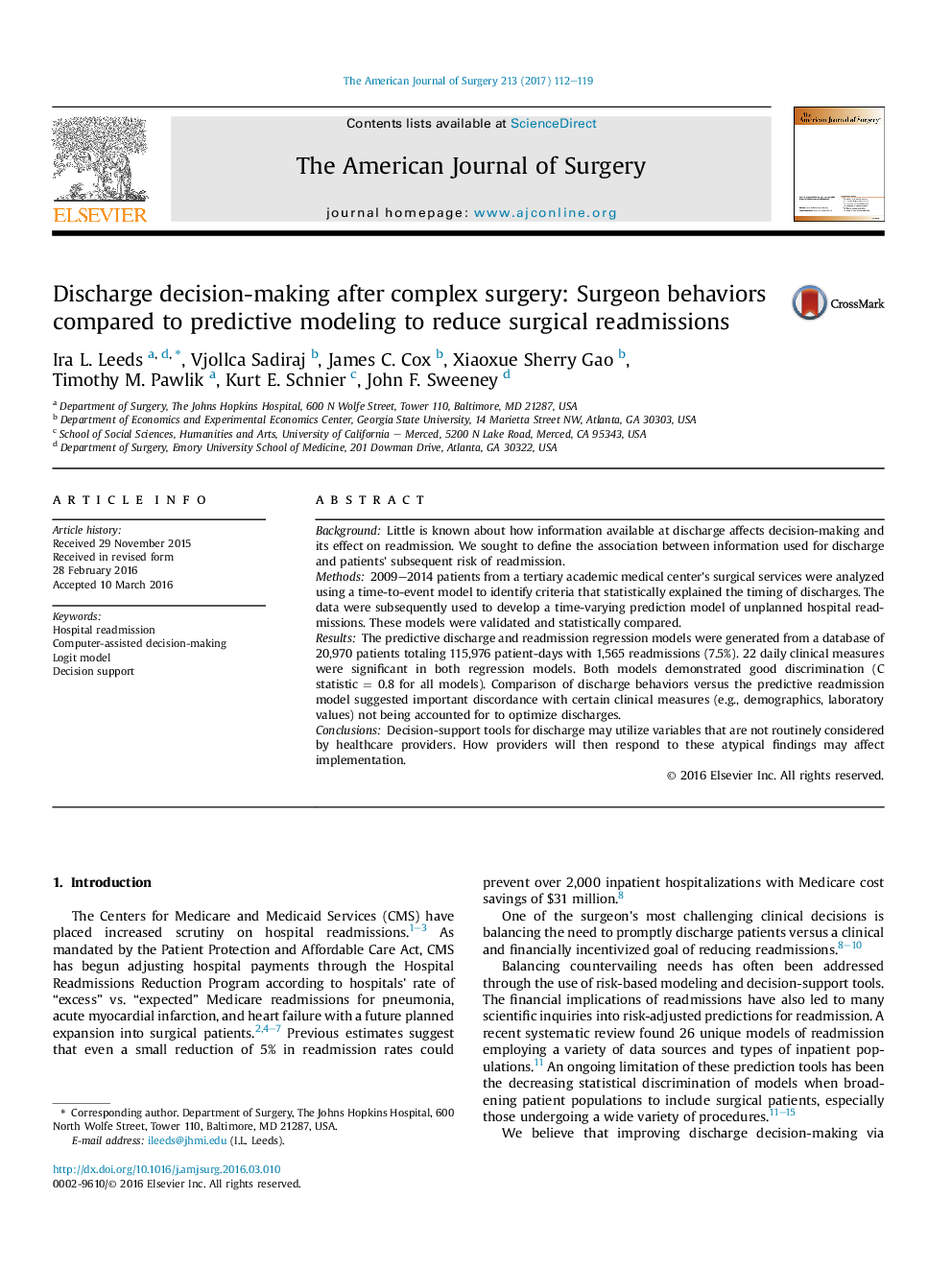| کد مقاله | کد نشریه | سال انتشار | مقاله انگلیسی | نسخه تمام متن |
|---|---|---|---|---|
| 5731173 | 1611475 | 2017 | 8 صفحه PDF | دانلود رایگان |
- Define the association between information used for discharge after surgery and patients' subsequent risk of readmission.
- Surgical patients were analyzed to identify criteria that statistically explained the timing of discharges.
- The same data were also used to develop a time varying prediction model of unplanned hospital readmissions.
- The models demonstrated discrepancy between what surgeons behaviourally used for discharge decision versus factors for preventing readmission.
BackgroundLittle is known about how information available at discharge affects decision-making and its effect on readmission. We sought to define the association between information used for discharge and patients' subsequent risk of readmission.Methods2009-2014 patients from a tertiary academic medical center's surgical services were analyzed using a time-to-event model to identify criteria that statistically explained the timing of discharges. The data were subsequently used to develop a time-varying prediction model of unplanned hospital readmissions. These models were validated and statistically compared.ResultsThe predictive discharge and readmission regression models were generated from a database of 20,970 patients totaling 115,976 patient-days with 1,565 readmissions (7.5%). 22 daily clinical measures were significant in both regression models. Both models demonstrated good discrimination (C statistic = 0.8 for all models). Comparison of discharge behaviors versus the predictive readmission model suggested important discordance with certain clinical measures (e.g., demographics, laboratory values) not being accounted for to optimize discharges.ConclusionsDecision-support tools for discharge may utilize variables that are not routinely considered by healthcare providers. How providers will then respond to these atypical findings may affect implementation.
Journal: The American Journal of Surgery - Volume 213, Issue 1, January 2017, Pages 112-119
